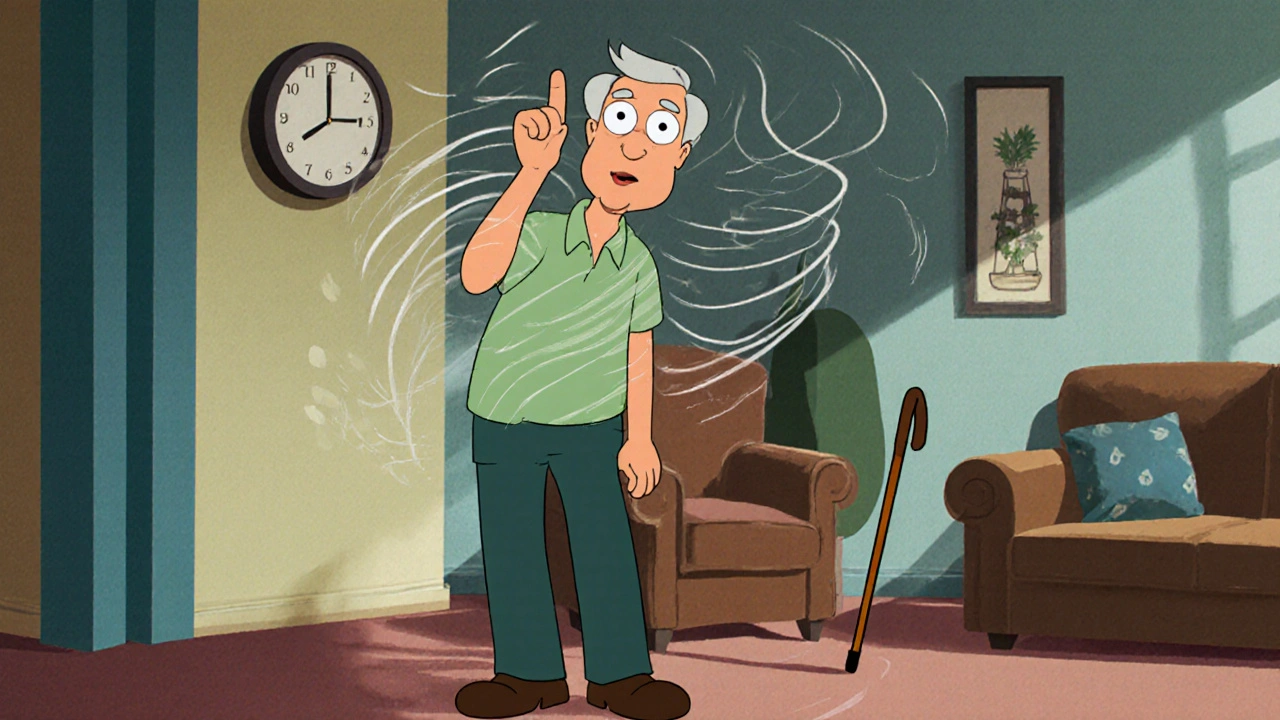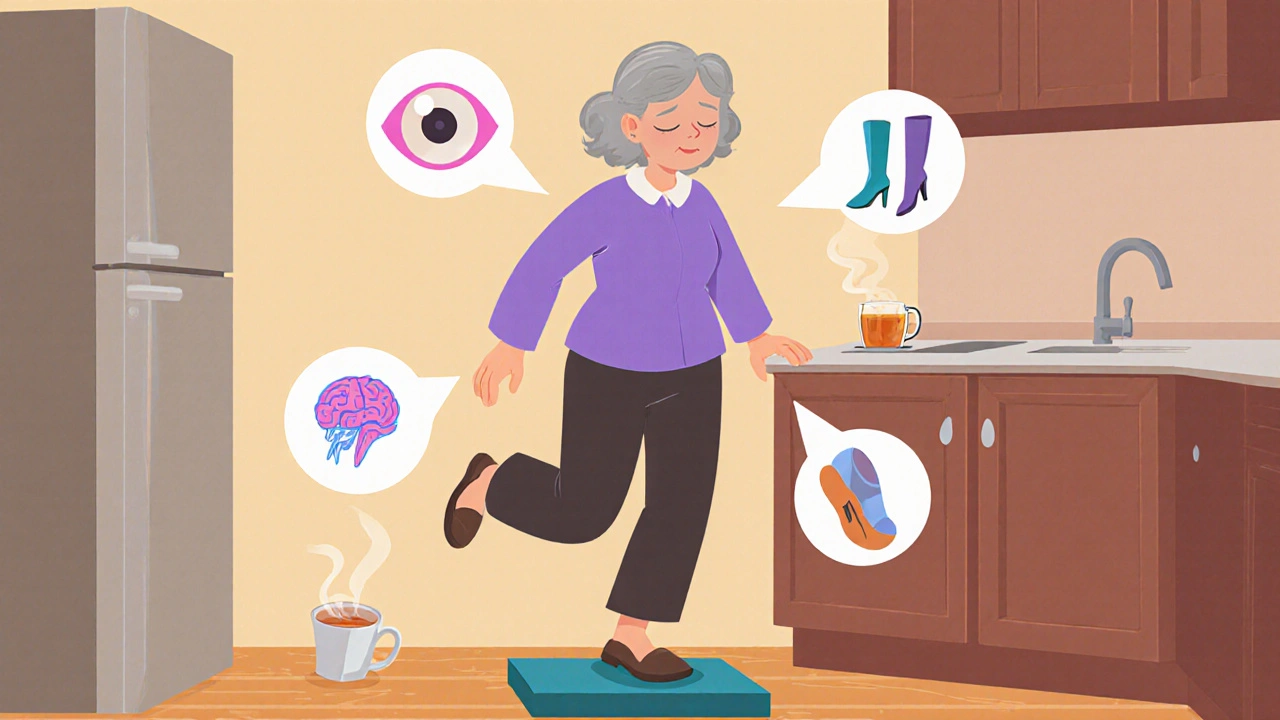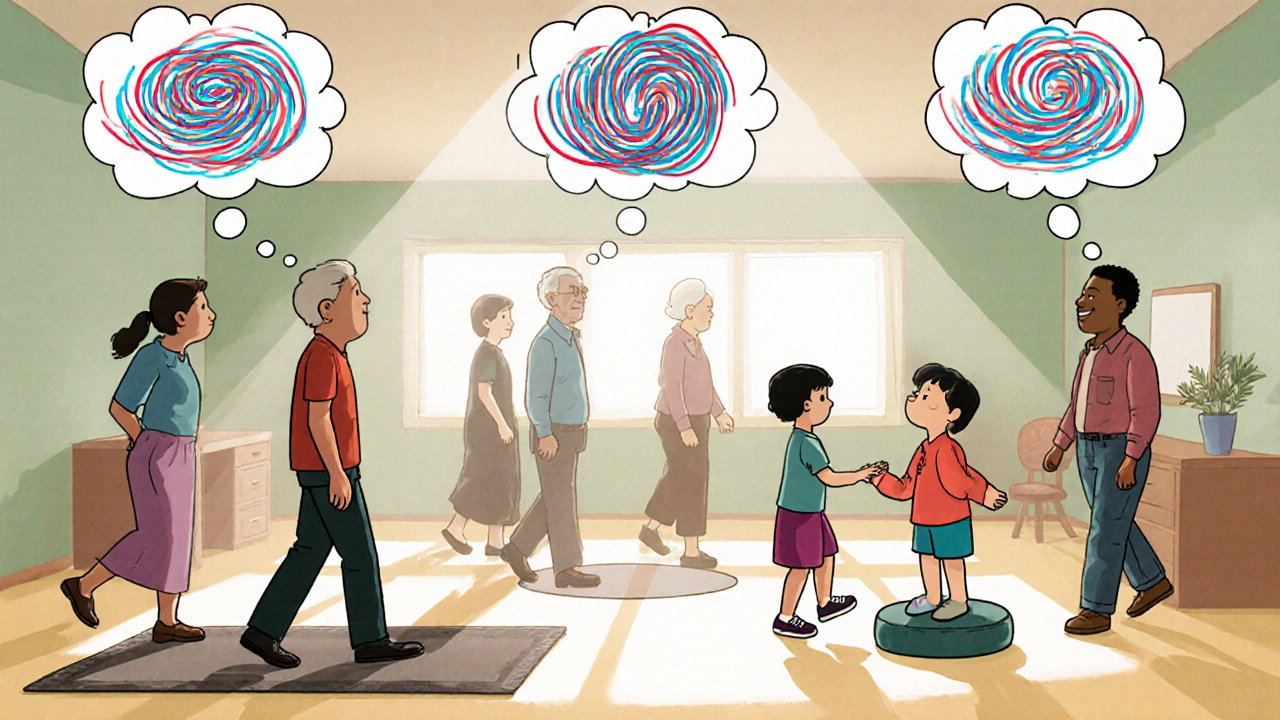
Why Your Balance Isn’t What It Used to Be
If you’ve ever felt like the floor moved when you stood still, or got dizzy turning over in bed, you’re not alone. About 30% of adults over 65 fall at least once a year. Many think it’s just aging-but it’s often something deeper: a problem with your vestibular system. That’s the part of your inner ear that tells your brain where your body is in space. When it’s damaged-by infection, injury, or just wear and tear-your balance goes haywire. You start avoiding stairs, skipping walks, or even standing up too fast. And that’s when falls happen.
But here’s the good news: your brain can relearn how to keep you steady. That’s what vestibular rehabilitation therapy (VRT) does. It’s not magic. It’s science. And it works.
What Exactly Is Vestibular Rehabilitation?
Vestibular rehabilitation isn’t a single treatment. It’s a set of exercises designed to help your brain adapt when your inner ear isn’t sending clear signals. Think of it like physical therapy for your balance system. The goal? To reduce dizziness, stop falls, and get you back to living without fear.
Studies show VRT improves gaze stability by 68% and balance by 73%. Patients report 37% fewer headaches and 42% less nausea. One Reddit user went from 3-4 falls a week to zero after 12 weeks. Another could finally read on the bus again-something they hadn’t done in years because their vision blurred every time they moved their head.
VRT doesn’t fix the inner ear. It teaches your brain to compensate. And that’s powerful. It works for older adults, people with diabetes, those recovering from concussions, and even patients with long-term vertigo. Age doesn’t matter. Health history doesn’t block it. Consistency does.
The Core Exercises That Actually Work
VRT isn’t about lifting weights or running miles. It’s about controlled movement-repeating motions that make you dizzy, on purpose, so your brain learns to ignore the noise.
- Gaze stability training: Hold a finger in front of you. Keep your eyes locked on it while you move your head side to side or up and down. Do this while standing, then sitting, then lying down. Start slow. Do 10 reps, 3 times a day. Over time, speed it up.
- Balance retraining: Stand with your feet together. Close your eyes. Hold onto a chair if you need to. Try to stay still for 30 seconds. When you can do that, try standing on one foot. Then try it on a foam pad. Progress slowly. The goal isn’t to be perfect-it’s to challenge your system safely.
- Habituation exercises: These target movements that trigger dizziness. Walk in circles. Turn your head while walking. Stand up from a chair quickly. Do them daily, even if you feel off. Each time you do it, your brain gets a little better at tuning out the false signals.
- Walking and posture training: Walk forward, then backward, then sideways. Add turns. Walk on uneven surfaces-grass, gravel, even a rug with bumps. Practice looking at a fixed point while moving. This trains your brain to use your eyes, feet, and inner ear together.
These aren’t fancy. No machines. No expensive gear. Just your body and a little patience.

How Long Until You See Results?
Don’t expect miracles in a week. VRT is a slow burn. Most people start noticing changes in 2-3 weeks. By 6-8 weeks, 89% of patients can do the activities they’ve been avoiding-like bending down, climbing stairs, or shopping alone.
Here’s the key: do the exercises every day. Not once in a while. Not when you feel good. Every day. Even if it’s just 5 minutes. Princeton Medicine says brief, frequent sessions work better than long, rare ones. Your brain needs repetition to rewire.
And don’t avoid dizziness. That’s the biggest mistake. If you stop moving because you feel off, your system gets worse. The goal is to provoke dizziness safely-so your brain learns it’s not dangerous. One patient said, “Each time I felt dizzy on purpose, I felt a little stronger after.”
Who Benefits the Most?
VRT helps people with:
- Benign Paroxysmal Positional Vertigo (BPPV): The most common cause of vertigo. Feels like the room spins when you roll over.
- Vestibular neuritis: A viral infection that knocks out one inner ear. Causes sudden, severe dizziness.
- Meniere’s Disease: Fluctuating hearing loss, ringing, and spinning spells.
- Post-concussion dizziness: Balance issues after head injury.
- Aging-related imbalance: Even without a clear diagnosis, older adults with unexplained wobbliness see big gains.
And it’s not just for the elderly. A 35-year-old office worker with chronic dizziness after a car accident improved in 10 weeks. A 72-year-old with arthritis and diabetes reduced her fall risk by 53% with daily exercises.
There’s no cutoff. If your balance is shaky and you’re tired of feeling unsafe, VRT can help.

How to Get Started
You don’t need a referral from a specialist to begin. But you should see a doctor first to rule out serious causes like stroke or tumors. Once those are ruled out, ask your GP for a referral to a physical therapist trained in vestibular rehabilitation.
Most programs include:
- One or two in-person sessions a week for 4-6 weeks
- A personalized home exercise plan
- Progress tracking and adjustments
Therapists will start you slow. They’ll watch how you move, how your eyes react, and how you respond to motion. Then they’ll design your plan. You’ll get a sheet with drawings and instructions. No guesswork.
Some clinics now use simple apps or video guides to help you stay on track. But the core is still the same: movement, repetition, and consistency.
What to Avoid
VRT works-but only if you do it right. Here’s what kills progress:
- Skipping days: If you miss 3 days in a row, your brain resets. Daily is non-negotiable.
- Stopping when you feel better: Symptoms fade before your brain fully adapts. Keep going for at least 8 weeks.
- Overdoing it: Pushing too hard can make you nauseous or exhausted. You should feel challenged, not sick.
- Ignoring pain: If your neck or back hurts during exercises, stop. Something’s off. Talk to your therapist.
And don’t rely on medication to mask symptoms. Antihistamines or anti-nausea drugs might help short-term, but they slow down recovery. VRT teaches your body to heal itself.
The Bigger Picture: Why This Matters
Falls aren’t just scary-they’re dangerous. One in five falls causes a serious injury: broken hip, head trauma, internal bleeding. After a fall, many older adults never walk the same way again. They lose independence. They get depressed.
Vestibular rehabilitation cuts fall risk by over half. It’s cheaper than surgery. Safer than long-term meds. And it gives you back your life.
Imagine being able to walk to the store without holding onto walls. To turn around in the kitchen without grabbing the counter. To sleep on your side again. That’s what VRT delivers.
It’s not about fixing your inner ear. It’s about teaching your brain to listen to the right signals. And that’s something you can do-every single day.
Can vestibular exercises help if I’ve had dizziness for years?
Yes. VRT works even for long-term cases. The 2012 study from the National Institutes of Health showed it helps patients regardless of how long symptoms have lasted. The key isn’t how long you’ve had it-it’s whether you’re willing to do the exercises consistently. Many people who’ve struggled for years see major improvements in 6-12 weeks.
Do I need special equipment for vestibular rehab?
No. You don’t need machines, treadmills, or high-tech gear. All you need is a chair, a wall for support, and a quiet space. Some therapists use foam pads or balance boards, but those are optional. The exercises rely on your body’s own movement and sensory feedback. Most home routines use just your weight, your eyes, and your sense of motion.
Is vestibular therapy covered by insurance?
In most cases, yes. Since VRT is delivered by licensed physical therapists, it’s typically covered under physical therapy benefits. Check your plan, but most Medicare and private insurers in the U.S. and U.K. cover it with a doctor’s referral. You may need to pay a copay, but it’s far less than the cost of treating a fall-related injury.
Can children benefit from vestibular rehab?
Yes. While most cases occur in adults, children with vestibular issues-often after infections or head injuries-can also benefit. Pediatric physical therapists adapt the exercises to be play-based: balancing on cushions, chasing targets with their eyes while moving, or playing “statue” with head turns. The principles are the same: controlled exposure, repetition, and gradual progression.
What if the exercises make me feel worse?
It’s normal to feel dizzy during the exercises-that’s the point. But if you feel nauseous for hours, have severe headaches, or feel faint, you might be doing too much too fast. Slow down. Reduce the number of reps or the speed. Talk to your therapist. They can adjust your plan. The goal is to challenge your system, not overwhelm it. Progress isn’t linear. Some days will be harder than others.